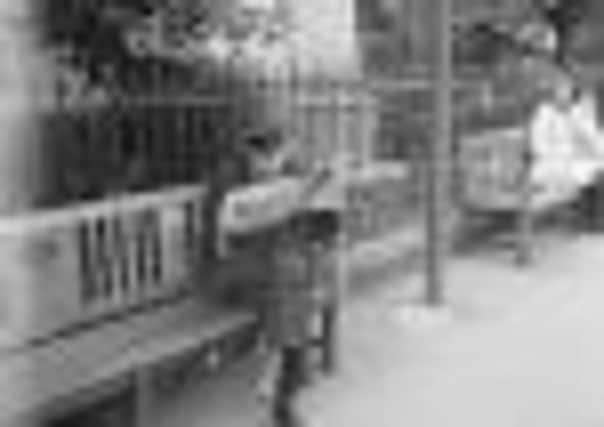Historic photos give snapshot into life on Princes Street


WHEN I recently came across a collection of photos of “interesting people” in Princes Street that I made nearly 40 years ago, several things struck me immediately.
Firstly, how much had changed and how much remained the same. The landmarks endure but countless other features were long gone.
Advertisement
Hide AdAdvertisement
Hide AdThen I wondered where these people were now? The kids would be in their 50s, the traffic wardens long retired and the Bowie lookalikes possibly bald. Whatever happened to the Capital’s eccentrics? And where then was all the Princes Street traffic?


As part of an end-of-term project at Fettes, I had used up a whole reel of 24 black-and-white 220 film. Even for a 17-year-old like me, that was considered wildly profligate in 1974, when holidaymakers could return home with just 12 photos. Nevertheless, I captured images of one-man bands, tourists, sailors and wandering likely lads who clearly saw themselves as 1974 style icons, all tight jeans, bomber jackets and sideburns – sights which we are thankfully spared today. Hems were higher though there is a universal pensioner outfit that persists to this day. The kids then wore proper short shorts, not today’s knee-length baggy affairs, which made them look like they’d escaped from The Famous Five or Secret Seven. It is the detail that fascinates. A chauffeur rests against a Rover, his boss not inclined to observe traffic regulations and perhaps visiting one of the street’s then many banks.
The vehicles are nearly all British with the exception of a rare and heavily taxed Renault. The buses have drivers’ cabins and adverts for McEwan’s Export. They didn’t have bin bags. They had Binn’s bags and sandwich boards didn’t promote the end of a sale but promised the end of the world. Why had I snapped an Asian couple, I asked myself? It occurred to me that Asians in 1974 must have been considered an unusual sight.
The images of black people, however, were not taken because of their colour; one lady moved with a fabulous elegance, one man looked utterly cool alongside a somewhat prim white girl, and who can resist snapping laughing kids, arms interlinked, of any colour? Though 1974 is nearly 40 years ago (and seems like only yesterday to some), there were similarities to today. The stock market had crashed by 80 per cent, the banks were in crisis and the property market was in chaos. Not only that, Britain was enduring Mud, Suzi Quatro, Sweet and Alvin Stardust! One snap shows a News reader in a world of his own as he absorbs the Open Golf report.
I was astonished to spot one image of a gardener working on the Floral Clock. The young man, then a botany student, is now Dr David Rae, director of horticulture at the Royal Botanic Garden. He’ll probably kill me when this is published. Wandering down to Stockbridge, I couldn’t help but snap the three children, arm in arm, as they cornered where Hector’s now stands. Each would be middle-aged today. Again, I heard myself ask: “Where they are now?”


Though my little project had been designed only to keep a post-exam teenager busy, it proved one thing. You can’t go wrong photographing the Capital and its citizens!
• Neil Griffiths is now national spokesman for the Royal British Legion Scotland
Now and then
THE average house price in 1974 was £10,990, with a gallon of petrol priced 42p.


Advertisement
Hide AdAdvertisement
Hide AdThe year saw the three-day week introduced by the Conservative government to conserve electricity during industrial action by coal miners. The strike came to an end later in the year due to an improved pay offer by the new Labour government.
Elsewhere, BBC1 first aired Bagpuss while the corporation also started Ceefax – one of the first public service information systems. The Christmas number one slot was claimed by Mud with Lonely This Christmas.
Birmingham City striker Bob Latchford became Britain’s most expensive footballer in a £350,000 move to Everton. Manchester United meanwhile were relegated from the then First Division.
It was also the year that Lord Lucan disappeared after the murder of his children’s nanny.